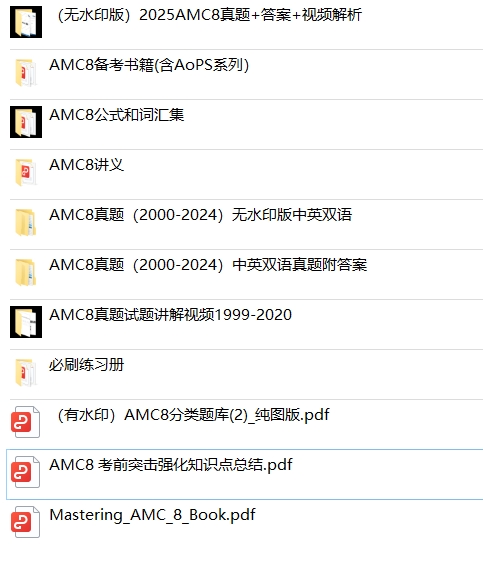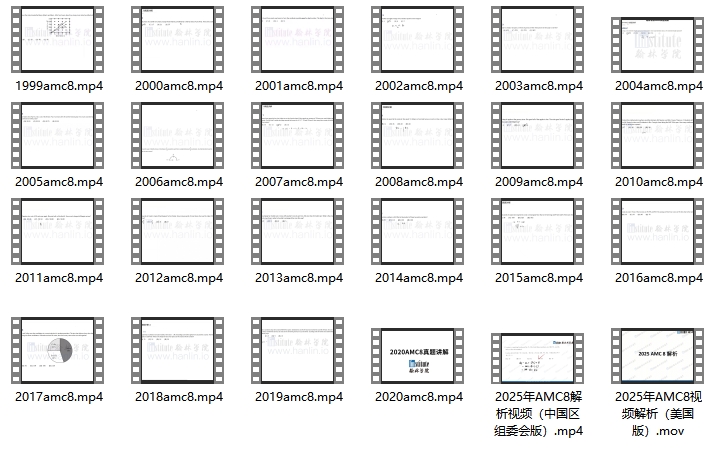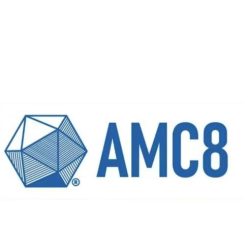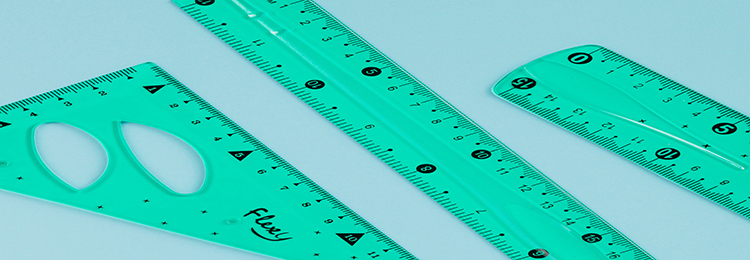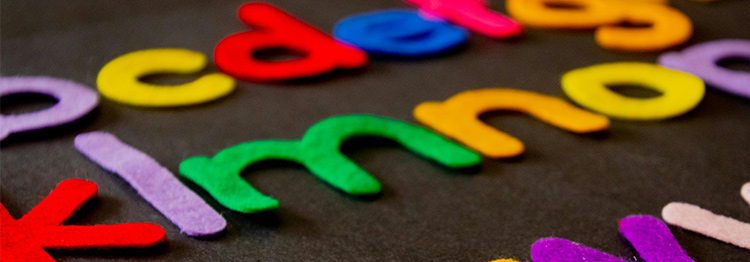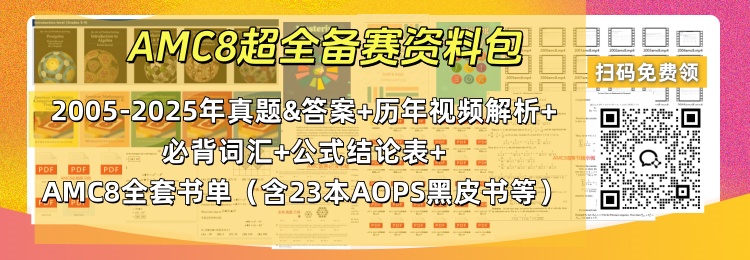一、AMC8适合哪些年级的学生?
AMC8(美国数学竞赛8年级及以下组)是由美国数学协会(MAA)主办的全球性数学竞赛,专为8年级及以下的学生设计。参赛者在考试当天年龄需不超过14.5周岁。根据近年参赛趋势,以下年级的学生均可参与并制定相应目标:
1. 3-4年级学生
定位:作为数学启蒙的起点,通过竞赛培养兴趣、积累经验,同时巩固校内数学基础(如四则运算、分数、基本几何)。
目标:以全球荣誉奖(15分+)为初期目标,逐步过渡到更高难度题型。
2. 5-6年级学生
定位:备考黄金期。此阶段学生已具备较强的逻辑思维,可系统学习AMC8知识点,如数论、代数方程、组合数学等。
目标:冲刺全球前5%(约19分)或前1%(21分+),为小升初择校增加竞争力。
3. 7-8年级学生
定位:以检验数学能力、衔接高阶竞赛(如AMC10)为主。需重点突破几何、概率统计等难点。
目标:争取全球前1%,同时为后续竞赛打下基础。
低龄学生参赛趋势
近年来,国内许多小学中高年级(如4-6年级)学生提前参赛,部分头部学校将AMC8成绩作为升学参考。
二、零基础学生如何系统学习AMC8?
对于数学基础较弱或首次接触竞赛的学生,建议分三阶段备考,周期一般为6-12个月:
1. 基础阶段(3-4个月)
目标:掌握AMC8四大核心模块知识点,补齐数学短板。
学习内容:
代数:整数、分数、百分数、一元一次方程、比例与逻辑推理。
几何:基础图形(三角形、矩形、圆)的面积与周长计算,勾股定理初步应用。
数论:质数与合数、奇偶性分析、整除性质与余数问题。
组合:排列组合基础、加法与乘法原理、简单概率。
方法建议:
使用《AMC8 Preparation》系列教材或在线课程系统学习知识点。
结合数独、逻辑谜题等趣味活动培养数学思维。
2. 强化阶段(2-3个月)
目标:熟悉题型,提升解题速度和策略。
学习内容:
分模块刷题:如应用题、几何变换、计数问题等。
真题演练:完成近10年真题,分析高频考点(如数论占比15%、几何占比25%)。
方法建议:
整理错题本,标注错误类型(如计算失误、知识点盲区)。
限时练习:前10题控制在8-10分钟,压轴题留10分钟思考。
3. 冲刺阶段(1-2个月)
目标:全真模拟考试环境,突破压轴题(21-25题)。
学习内容:
高频难题训练:如数论中的质因数分解、几何中的相似三角形综合应用。
策略优化:灵活运用排除法、特殊值代入法快速解题。
方法建议:
每周1-2次限时模考(40分钟完成25题),模拟真实考场压力。
重点复习易错题,如单位换算、题目条件误读等陷阱。
三、2025年AMC8考试重要时间节点
以下是2025年AMC8的关键日程安排,供考生提前规划:
| 事项 | 时间节点 | 注意事项 |
|---|---|---|
| 报名开始 | 2024年10月22日 | 需通过合作学校或指定机构报名。 |
| 报名截止 | 2025年1月12日 | 逾期不可补报,建议提前1个月完成。 |
| 准考证下载 | 2025年1月15日18:00后 | 核对个人信息,确认考试形式(线上/线下)。 |
| 在线模拟考试 | 2025年1月18日-1月19日 | 熟悉机考系统操作流程。 |
| 正式考试 | 2025年1月23日10:00-10:40 | 中英双语试卷,需携带身份证件。 |
| 成绩查询 | 考后2-4周(约2月中旬) | 官网或报名机构查询分数。 |
| 奖项公布 | 考后6-8周(约3月初) | 全球前1%(约21分)、前5%(约17分)。 |
| 证书下载 | 考后6-8周 | 电子证书可用于升学申请。 |
AMC8作为国际认可的数学竞赛,既是检验学生数学能力的标尺,也是升学择校的重要加分项。对于不同年级的学生,需根据自身基础制定阶梯式目标:低年级以兴趣培养为主,中高年级侧重竞赛技巧提升。零基础学生通过系统学习、真题强化和策略优化,完全有望在6-12个月内实现高分突破。
备赛的同学可以免费下载
2000-2025AMC8中英文真题+解析+必备公式集+词汇表+备赛书籍等!

